What we’re reading: November 24th
A special “thank you” too the many people who have contributed to What We’re Reading over the past year! And don’t forget you can sign up to receive email alerts – click here then “Notify me of new content”.
Review: Plant systems biology at the single-cell level
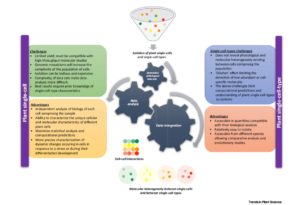 The establishment and enormous developments in -omics and systems biology over the last years have increased our understanding and ability to analyze complex biological processes at entire plant, organ or tissue levels. However, these arrays of datasets have the limitation of cellular complexity in terms of computational analysis and model predictions. Recent methodology and technical advances have opened new opportunities to enable biological analysis at single-cell or single-cell type resolution. This, when coupled to bioinformatic tools, has enhanced our knowledge of plant cells as systems. This review from Libault et al. gives an overview of the recent advances, current challenges, and future opportunities to dissect biological processes at high resolution. Studies in this direction will help us to understand conserved molecular processes, evolutionary relationships, and response to stress of preferentially expressed genes. Hence this emerging area in plant science will provide new insights into our understanding of plant cell behavior at the cellular level. (Summary by Amey Redkar) Trends Plant Sci. 10.1016/j.tplants.2017.08.006
The establishment and enormous developments in -omics and systems biology over the last years have increased our understanding and ability to analyze complex biological processes at entire plant, organ or tissue levels. However, these arrays of datasets have the limitation of cellular complexity in terms of computational analysis and model predictions. Recent methodology and technical advances have opened new opportunities to enable biological analysis at single-cell or single-cell type resolution. This, when coupled to bioinformatic tools, has enhanced our knowledge of plant cells as systems. This review from Libault et al. gives an overview of the recent advances, current challenges, and future opportunities to dissect biological processes at high resolution. Studies in this direction will help us to understand conserved molecular processes, evolutionary relationships, and response to stress of preferentially expressed genes. Hence this emerging area in plant science will provide new insights into our understanding of plant cell behavior at the cellular level. (Summary by Amey Redkar) Trends Plant Sci. 10.1016/j.tplants.2017.08.006
Review: Diffuse growth of plant cell walls
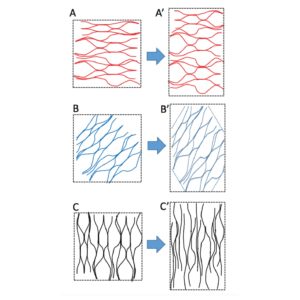
In order for a cell to expand, its volume needs to increase and the cell wall needs to loosen up. There are multiple processes resulting in cell wall loosening, but not all of them result in extension. Cosgrove differentiates different structural, mechanical and physiocochemical processes that lead to cell wall loosening. The interaction between cellulose microfibrils is proposed to be main load-bearing network, which interacts with expansins, xyloglucans and pectins, which modify bundle packing, slippage and cell expansion. The movement of microfibrils relative to each other differs depending on the bundle orientation, ranging from increased distance between the bundles to straightening of the bundles and increased slippage. How the mechanical junctions between the cellulose microfibrils are regulated remains to be unveiled. (Summary by Magdalena Julkowska) Plant Physiol. 10.1104/pp.17.01541
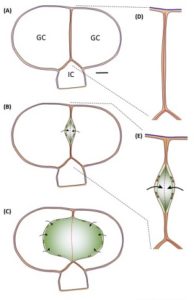 Plant glandular trichomes can store and secrete great amounts of volatile organic compounds (VOCs) that are important for a variety of processes, from development to interacting with herbivores. VOCs accumulate in specific extracellular spaces which can be subcuticular or intercellular. The active transport of VOCs from the location of biosynthesis to the storage cavity across plasma membranes and cell walls is an essential process for the accumulation of VOCs. Further research in this area is needed to understand the transport processes. Additionally, the cavities must have a mechanism to limit the release of the VOCs into the atmosphere or into the secretory cells (toxicity). Electron microscopy and immunostaining indicate that the cell wall lining the cavities has a role in retaining VOCs. However, more research is needed to understand the changes in the cell wall and cuticle composition that allow for the accumulation of VOCs in the cavities. (Summary by Julia Miller) Trends Plant Sci. 10.1016/j.tplants.2017.09.001
Plant glandular trichomes can store and secrete great amounts of volatile organic compounds (VOCs) that are important for a variety of processes, from development to interacting with herbivores. VOCs accumulate in specific extracellular spaces which can be subcuticular or intercellular. The active transport of VOCs from the location of biosynthesis to the storage cavity across plasma membranes and cell walls is an essential process for the accumulation of VOCs. Further research in this area is needed to understand the transport processes. Additionally, the cavities must have a mechanism to limit the release of the VOCs into the atmosphere or into the secretory cells (toxicity). Electron microscopy and immunostaining indicate that the cell wall lining the cavities has a role in retaining VOCs. However, more research is needed to understand the changes in the cell wall and cuticle composition that allow for the accumulation of VOCs in the cavities. (Summary by Julia Miller) Trends Plant Sci. 10.1016/j.tplants.2017.09.001
Regulatory small RNAs responsible for natural variation in snapdragon flower color patterning ($)
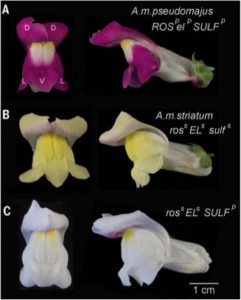 Flower color pattern is a major trait influencing pollinator attraction, but underlying regulatory mechanisms are still poorly understood. Using co-existing Snapdragon subspecies displaying different flower pigmentation motifs, Bradley et al. investigated the molecular basis of flower color patterning. They identified an inverted gene duplication producing small RNAs targeting a gene involved in the biosynthesis of a yellow pigment. This translates to a modification of the color pattern at the pollinator entry site. Interestingly, the inverted duplication is found in only one of the co-existing subspecies, and analysis of the allele frequency suggests that this allele is subjected to active selection in their local habitat. The authors propose that occurrence of such dynamic and flexible regulatory mechanisms provides an important alternative to transcription factors for generating diversity in phenotypes in natural environments. (Summary by Matthias Benoit) Science 10.1126/science.aao3526
Flower color pattern is a major trait influencing pollinator attraction, but underlying regulatory mechanisms are still poorly understood. Using co-existing Snapdragon subspecies displaying different flower pigmentation motifs, Bradley et al. investigated the molecular basis of flower color patterning. They identified an inverted gene duplication producing small RNAs targeting a gene involved in the biosynthesis of a yellow pigment. This translates to a modification of the color pattern at the pollinator entry site. Interestingly, the inverted duplication is found in only one of the co-existing subspecies, and analysis of the allele frequency suggests that this allele is subjected to active selection in their local habitat. The authors propose that occurrence of such dynamic and flexible regulatory mechanisms provides an important alternative to transcription factors for generating diversity in phenotypes in natural environments. (Summary by Matthias Benoit) Science 10.1126/science.aao3526
The kinase ERULUS controls pollen tube targeting and growth in Arabidopsis thaliana
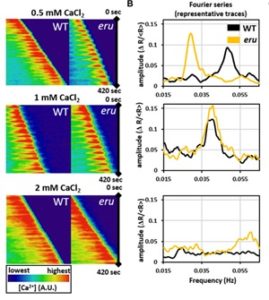 Pollen cells have a fascinating ability to transform from a small spherical cell to a very elongated shape known as the pollen tube (PT) during fertilization. Pollen cells must navigate through the female tissue, find an ovary, and burst to release the two sperm cell nuclei as well as the vegetative nucleus, a process dependent upon calcium sensing and signaling. Schoenaers et al. identify a key player in this process, the receptor-like kinase ERULUS (ERU). Mutant pollen grown under low calcium conditions displayed decreased growth rates. Calcium FRET image analysis showed that the canonical calcium oscillations observed at the tips of growing PTs were altered in eru pollen grown on low calcium media. Aberrant calcium oscillations resulted in defective PT targeting in eru mutants. Furthermore, heterozygous eru plants undergoing self-fertilization deviated from expected Mendelian inheritance, with less homozygous eru progeny seen. These data show a role for ERU in calcium sensing, PT targeting, and fertilization. (Summary by Alecia Biel) Front Plant Sci. 10.3389/fpls.2017.01942.
Pollen cells have a fascinating ability to transform from a small spherical cell to a very elongated shape known as the pollen tube (PT) during fertilization. Pollen cells must navigate through the female tissue, find an ovary, and burst to release the two sperm cell nuclei as well as the vegetative nucleus, a process dependent upon calcium sensing and signaling. Schoenaers et al. identify a key player in this process, the receptor-like kinase ERULUS (ERU). Mutant pollen grown under low calcium conditions displayed decreased growth rates. Calcium FRET image analysis showed that the canonical calcium oscillations observed at the tips of growing PTs were altered in eru pollen grown on low calcium media. Aberrant calcium oscillations resulted in defective PT targeting in eru mutants. Furthermore, heterozygous eru plants undergoing self-fertilization deviated from expected Mendelian inheritance, with less homozygous eru progeny seen. These data show a role for ERU in calcium sensing, PT targeting, and fertilization. (Summary by Alecia Biel) Front Plant Sci. 10.3389/fpls.2017.01942.
Boundary formation through direct threshold-based readout of mobile small RNA gradients
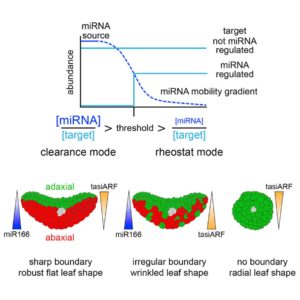 How does a flat leaf form? Previous studies have indicated that the formation of a flattened blade depends upon a boundary layer between the upper and lower cell layers, and that mobile small RNAs contribute to this boundary, but how this occurs is not fully resolved. For example, although the small RNA tasiRNA is present in a diffused gradient pattern, its targets (ARF transcription factors) accumulate in an “on or off” binary pattern. Skopelitis et al. approach this question by experimentally altering small RNA distribution patterns, and find that there is a sharp threshold response directly attributable to the ratio between a small RNA and its target, largely independent of the cell layer in which this threshold lies. Similar results were seen using artificial miRNA and targets (miRGFP silencing GFP). These data argue against a pre-pattern and against the boundary requiring feedback from downstream factors, and indicate that “binary readouts are an intrinsic property of small RNA gradients.” (Summary by Mary Williams) Devel. Cell 10.1016/j.devcel.2017.10.003
How does a flat leaf form? Previous studies have indicated that the formation of a flattened blade depends upon a boundary layer between the upper and lower cell layers, and that mobile small RNAs contribute to this boundary, but how this occurs is not fully resolved. For example, although the small RNA tasiRNA is present in a diffused gradient pattern, its targets (ARF transcription factors) accumulate in an “on or off” binary pattern. Skopelitis et al. approach this question by experimentally altering small RNA distribution patterns, and find that there is a sharp threshold response directly attributable to the ratio between a small RNA and its target, largely independent of the cell layer in which this threshold lies. Similar results were seen using artificial miRNA and targets (miRGFP silencing GFP). These data argue against a pre-pattern and against the boundary requiring feedback from downstream factors, and indicate that “binary readouts are an intrinsic property of small RNA gradients.” (Summary by Mary Williams) Devel. Cell 10.1016/j.devcel.2017.10.003
Fe sparing in Arabidopsis rosettes
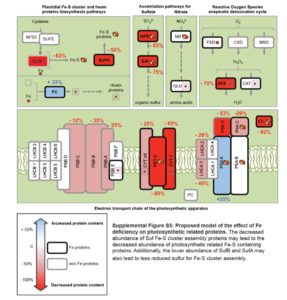 All cells need iron (Fe), which is frequently limiting for life. Plants (like other organisms) have complex strategies for uptake of Fe from their environment. Studies in the green alga Chlamodomonas have demonstrated that these organisms are able to prioritize certain pathways when Fe is limiting, a process called “Fe sparing”. Hantzis et al. used a hydroponic system to investigate Fe sparing in Arabidopsis. They found that “during Fe deficiency specific abundant Fe proteins of the chloroplast such as ferredoxin and the cytochrome-b6f complex are targeted for down-regulation at the transcript level which has consequences for photosynthesis and other chloroplast metabolism,” with generally milder effects seen for mitochondrial proteins. (Summary by Mary Williams) Plant Physiol. 10.1104/pp.17.01497
All cells need iron (Fe), which is frequently limiting for life. Plants (like other organisms) have complex strategies for uptake of Fe from their environment. Studies in the green alga Chlamodomonas have demonstrated that these organisms are able to prioritize certain pathways when Fe is limiting, a process called “Fe sparing”. Hantzis et al. used a hydroponic system to investigate Fe sparing in Arabidopsis. They found that “during Fe deficiency specific abundant Fe proteins of the chloroplast such as ferredoxin and the cytochrome-b6f complex are targeted for down-regulation at the transcript level which has consequences for photosynthesis and other chloroplast metabolism,” with generally milder effects seen for mitochondrial proteins. (Summary by Mary Williams) Plant Physiol. 10.1104/pp.17.01497
The genome sequence of the wild tomato Solanum pimpinellifolium provides insights into salinity tolerance
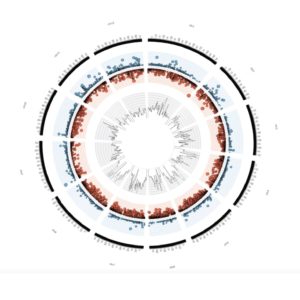 Wild relatives of domesticated plants, such as tomato, are valuable resource for breeding, but their genomes are often not very well sequenced. Razali et al. provide the first high-quality genome of wild tomato S.pimpinellifolium LA0480, and use Dragon Eukaryotic Analysis Platform to functionally annotate the genes. The comparison between cultivated tomato and LA0480 revealed that the wild tomato has a higher number of the genes involved in abiotic and biotic stress tolerance. The team identified inositol-3-phosphate synthase and ~phosphatase genes to be present in high copy number in wild tomato, which might contribute to the high salinity tolerance observed for the wild tomato. The importance of other genes that also show difference in copy number variation remains to be validated. (Summary by Magdalena Julkowska) bioRxiv
Wild relatives of domesticated plants, such as tomato, are valuable resource for breeding, but their genomes are often not very well sequenced. Razali et al. provide the first high-quality genome of wild tomato S.pimpinellifolium LA0480, and use Dragon Eukaryotic Analysis Platform to functionally annotate the genes. The comparison between cultivated tomato and LA0480 revealed that the wild tomato has a higher number of the genes involved in abiotic and biotic stress tolerance. The team identified inositol-3-phosphate synthase and ~phosphatase genes to be present in high copy number in wild tomato, which might contribute to the high salinity tolerance observed for the wild tomato. The importance of other genes that also show difference in copy number variation remains to be validated. (Summary by Magdalena Julkowska) bioRxiv
The tomato DELLA protein PROCERA acts in guard cells to promote stomatal closure
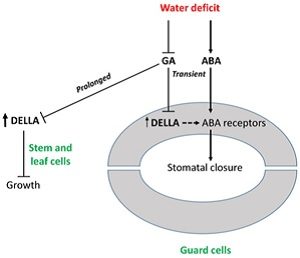 Nuclear accumulation of DELLA proteins induces transcriptional reprogramming and is well known to suppress the gibberellin (GA) pathway. While DELLAs can negatively regulate GA, increased GA levels can also signal DELLA degradation. GA is a growth-regulating hormone that is also involved in inhibiting the stress-signaling hormone ABA, but the mechanism behind this action is unclear. Nir et al. investigate the potential of DELLA proteins to connect these opposing hormone signaling pathways. The tomato genome encodes one DELLA gene, PROCERA (PRO). Semi dominate-negative pro mutants, in which DELLA activity is substantially diminished, exhibited decreased drought tolerance, increased stomatal pores, and increased transpiration rates. Conversely, Gain-of-function rgaΔ17 mutants, which express weak but constitutively active DELLA proteins, show the opposite phenotype: increased drought tolerance and decreased transpiration rates and stomatal pore size. Furthermore, DELLA activity enhanced ABA-induced stomatal closure and upregulated transcription of the ABA receptor PYR1. The authors concluded that DELLA, although not promoting ABA accumulation, does act in a GC-specific manner to enhance ABA-induced stomatal closure. DELLA likely acts upstream of ABA-induced ROS production and promotes ABA binding to PR/PYL/RCAR. These findings suggest that DELLAs are important for plant adaptation to drought stress. (Summary by Alecia Biel) Plant Cell. 10.1105/tpc.17.00542.
Nuclear accumulation of DELLA proteins induces transcriptional reprogramming and is well known to suppress the gibberellin (GA) pathway. While DELLAs can negatively regulate GA, increased GA levels can also signal DELLA degradation. GA is a growth-regulating hormone that is also involved in inhibiting the stress-signaling hormone ABA, but the mechanism behind this action is unclear. Nir et al. investigate the potential of DELLA proteins to connect these opposing hormone signaling pathways. The tomato genome encodes one DELLA gene, PROCERA (PRO). Semi dominate-negative pro mutants, in which DELLA activity is substantially diminished, exhibited decreased drought tolerance, increased stomatal pores, and increased transpiration rates. Conversely, Gain-of-function rgaΔ17 mutants, which express weak but constitutively active DELLA proteins, show the opposite phenotype: increased drought tolerance and decreased transpiration rates and stomatal pore size. Furthermore, DELLA activity enhanced ABA-induced stomatal closure and upregulated transcription of the ABA receptor PYR1. The authors concluded that DELLA, although not promoting ABA accumulation, does act in a GC-specific manner to enhance ABA-induced stomatal closure. DELLA likely acts upstream of ABA-induced ROS production and promotes ABA binding to PR/PYL/RCAR. These findings suggest that DELLAs are important for plant adaptation to drought stress. (Summary by Alecia Biel) Plant Cell. 10.1105/tpc.17.00542.
Persistent drought monitoring using a microfluidic-printed electro-mechanical sensor of stomata in planta
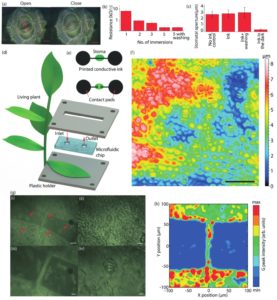 The study of stomatal dynamics is crucial for understanding photosynthetic gas exchange and plant hydraulics, but there are currently no methods for measuring the conductance of individual stomata in real-time and in planta. As such, Koman et al. developed a system where a nanoparticle conducting-ink was used to print a conductive circuit across a stomatal pore with micrometre precision. When stomata were closed the circuit was complete, while opening led to a measureable increase in electrical resistance. The authors used this stomatal electro-mechanical pore size sensor (SEMPSS) to assess the dynamics of stomatal closing and opening in response to light-dark cycles, light quality and drought. (Summary by Mike Page) Lab On a Chip 10.1039/C7LC00930E
The study of stomatal dynamics is crucial for understanding photosynthetic gas exchange and plant hydraulics, but there are currently no methods for measuring the conductance of individual stomata in real-time and in planta. As such, Koman et al. developed a system where a nanoparticle conducting-ink was used to print a conductive circuit across a stomatal pore with micrometre precision. When stomata were closed the circuit was complete, while opening led to a measureable increase in electrical resistance. The authors used this stomatal electro-mechanical pore size sensor (SEMPSS) to assess the dynamics of stomatal closing and opening in response to light-dark cycles, light quality and drought. (Summary by Mike Page) Lab On a Chip 10.1039/C7LC00930E
Transgenic Cavendish bananas with resistance to Fusarium wilt
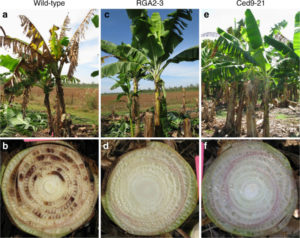 Banana, the common breakfast component, is also a staple food in some regions of the world. More than 99% of the bananas exported world-wide are the clonally-propagated Cavendish variety, which have very little genetic variation and so are prone to disease outbreaks. Recent years have witnessed the emergence of a fungus that has threatened Cavendish banana production, Fusarium oxysporum f. sp. cubense tropical race 4, which causes Fusarium wilt or Panama disease. There is no effective chemical control against this pathogen and acceptable resistant varieties are yet lacking. Dale et al. have genetically modified the Cavendish banana and have found a striking degree of resistance against this fungal disease. The authors report on their 3-year field trial of two transgenic lines of Cavendish banana, one that is transformed with RGA2, a gene that is found in south Asian diploid banana subspecies. RGA2 homologs are naturally present in Cavendish but are expressed at a low level. The other gene, Ced9, is derived from a nematode and encodes for anti-apoptosis property which makes Cavendish banana complete disease-free. These results demonstrate exciting opportunities from GM technology as a solution for controlling Panama disease of banana. (Summary by Amey Redkar) Nat. Commun. 10.1038/s41467-017-01670-6
Banana, the common breakfast component, is also a staple food in some regions of the world. More than 99% of the bananas exported world-wide are the clonally-propagated Cavendish variety, which have very little genetic variation and so are prone to disease outbreaks. Recent years have witnessed the emergence of a fungus that has threatened Cavendish banana production, Fusarium oxysporum f. sp. cubense tropical race 4, which causes Fusarium wilt or Panama disease. There is no effective chemical control against this pathogen and acceptable resistant varieties are yet lacking. Dale et al. have genetically modified the Cavendish banana and have found a striking degree of resistance against this fungal disease. The authors report on their 3-year field trial of two transgenic lines of Cavendish banana, one that is transformed with RGA2, a gene that is found in south Asian diploid banana subspecies. RGA2 homologs are naturally present in Cavendish but are expressed at a low level. The other gene, Ced9, is derived from a nematode and encodes for anti-apoptosis property which makes Cavendish banana complete disease-free. These results demonstrate exciting opportunities from GM technology as a solution for controlling Panama disease of banana. (Summary by Amey Redkar) Nat. Commun. 10.1038/s41467-017-01670-6
The structural basis of flagellin detection by NAIP5: A strategy to limit pathogen immune evasion ($)
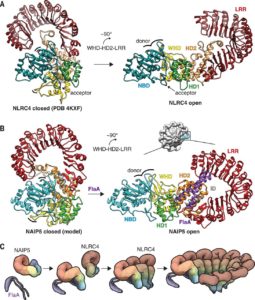 Both plants and animals have a sophisticated immune system comprising receptors to detect pathogen-encoded epitopes or virulence molecules. These receptors are programmed to recognize pathogen ligands which are rapidly evolving over an evolutionary time. However, the structural basis of ligand perception by immune receptors that encode nucleotide-binding domain leucine-rich repeat (NLR) proteins and of their further activation is still unknown. Tenthorey et al. have shed light onto this process by structurally dissecting one of the best characterized NLRs in mouse NAIP5. NAIPs co-oligomerise with NLRC4 and form a high molecular weight structure called the inflammasome. By using the Cryo-EM technology, the authors resolve the ~1.4 megadalton structural details of NAIP5-NLRC4 inflammasome bound to flagellin from Legionella. These set of experiments beautifully reveal the mechanism of NLR activation by a ligand. Upon binding to flagellin, NAIP5 undergoes a conformational change triggering rotation of monomeric NLRC4, thereby disrupting the inflammasome structure. Multiple flagellin surfaces are recognized by NAIP5 and multiple mutations on flagellin to evade NAIP5 recognition has a huge fitness cost for the pathogen. This provides a solid structural and functional evidence of multisurface recognition in immune activation to withhold the pathogen immune escape. (Summary by Amey Redkar) Science 10.1126/science.aao1140
Both plants and animals have a sophisticated immune system comprising receptors to detect pathogen-encoded epitopes or virulence molecules. These receptors are programmed to recognize pathogen ligands which are rapidly evolving over an evolutionary time. However, the structural basis of ligand perception by immune receptors that encode nucleotide-binding domain leucine-rich repeat (NLR) proteins and of their further activation is still unknown. Tenthorey et al. have shed light onto this process by structurally dissecting one of the best characterized NLRs in mouse NAIP5. NAIPs co-oligomerise with NLRC4 and form a high molecular weight structure called the inflammasome. By using the Cryo-EM technology, the authors resolve the ~1.4 megadalton structural details of NAIP5-NLRC4 inflammasome bound to flagellin from Legionella. These set of experiments beautifully reveal the mechanism of NLR activation by a ligand. Upon binding to flagellin, NAIP5 undergoes a conformational change triggering rotation of monomeric NLRC4, thereby disrupting the inflammasome structure. Multiple flagellin surfaces are recognized by NAIP5 and multiple mutations on flagellin to evade NAIP5 recognition has a huge fitness cost for the pathogen. This provides a solid structural and functional evidence of multisurface recognition in immune activation to withhold the pathogen immune escape. (Summary by Amey Redkar) Science 10.1126/science.aao1140
Using natural wood as a cost-effective alternative in solar steam generation
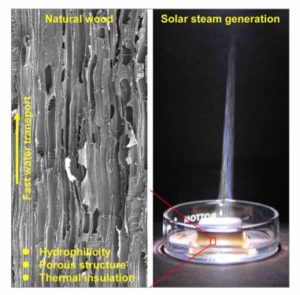 Using solar irradiation effectively for steam generation is a promising renewable energy source for a wide variety of applications, including large-scale power generation, desalination, water purification and sterilization, which is particularly important in remote areas where solar power is often the only reliable or available energy source. Traditional methods of solar steam generation are ineffective and lead to energy loss since it is based on heating large volumes of liquid to high temperatures. Avenues to improve solar steam generation is a subject of great interest, and porous receivers and nanofluids have been proposed to reduce losses. A renewable material of current interest is wood, which consist of a rich mesoporous structure, vertically aligned microchannels and an interconnected bordered pit system for highly effective water transport. A recent study investigated the efficiency of carbonised wood of various tree species for application in solar steam generation devices. The researchers followed a simple one-step, cost-effective procedure, carbonising the top surface of wood samples, and measured the densities, porosities, and thermal conductivities of the samples, important properties for steam generation devices. Although this study was purely proof of concept, poplar wood indicated exceptionally effective steam conduction due to the high porosity, low thermal conductivity, and high light-capturing capability of poplar wood-based solar steam generation devices. Natural wood can, therefore, be used in many energy-water nexus applications, enhancing efficiency and reducing losses in a low-cost and sustainable way. (Summary by Danielle Roodt Prinsloo) Joule 10.1016/j.joule.2017.09.011
Using solar irradiation effectively for steam generation is a promising renewable energy source for a wide variety of applications, including large-scale power generation, desalination, water purification and sterilization, which is particularly important in remote areas where solar power is often the only reliable or available energy source. Traditional methods of solar steam generation are ineffective and lead to energy loss since it is based on heating large volumes of liquid to high temperatures. Avenues to improve solar steam generation is a subject of great interest, and porous receivers and nanofluids have been proposed to reduce losses. A renewable material of current interest is wood, which consist of a rich mesoporous structure, vertically aligned microchannels and an interconnected bordered pit system for highly effective water transport. A recent study investigated the efficiency of carbonised wood of various tree species for application in solar steam generation devices. The researchers followed a simple one-step, cost-effective procedure, carbonising the top surface of wood samples, and measured the densities, porosities, and thermal conductivities of the samples, important properties for steam generation devices. Although this study was purely proof of concept, poplar wood indicated exceptionally effective steam conduction due to the high porosity, low thermal conductivity, and high light-capturing capability of poplar wood-based solar steam generation devices. Natural wood can, therefore, be used in many energy-water nexus applications, enhancing efficiency and reducing losses in a low-cost and sustainable way. (Summary by Danielle Roodt Prinsloo) Joule 10.1016/j.joule.2017.09.011



